How to Make an Art Museum Trip Fun for Kids
The grandkids go to science museums, natural history museums, and kids’ museums. But no art museums.
When we offered to take them, neither child was particularly excited.
Harboring a Pet Peeve
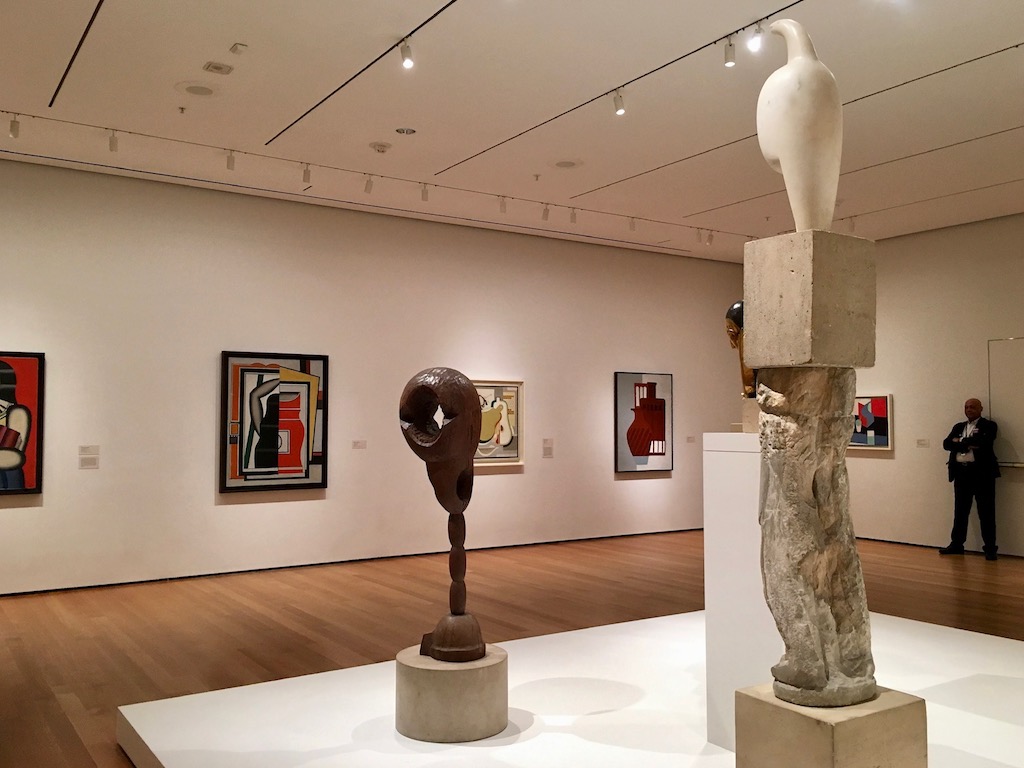
Years ago, at the Museum of Modern Art in New York City, I watched a young mother with a small child in tow. Mom set the child in front of a painting and asked the name of the artist. “Picasso!’ the child replied triumphantly. Then the next. “Monet!” “Chagall!” “Gaugin!”
Some might have been impressed; I thought (harshly) it was a trained monkey act.
When I have children, I said to myself then, I want them to truly see the art! Then appreciate the work.
My Own Failed Art Museum Trip
So, when I took my own sons, then seven and two, to the Rijksmuseum in Amsterdam, I paused before a famous masterwork asking, “What do you see?” My seven-year-old said, “I see a house…I see trees…I see animals….” Okay, I thought. Good start.
Next painting: how is this different from the previous? “The house is different…the trees are different…the animals are different….” Insightful.
On to the next. “The house is different…the trees are different….” After viewing a few more paintings with the exact same response, I realized he was merely answering by rote!
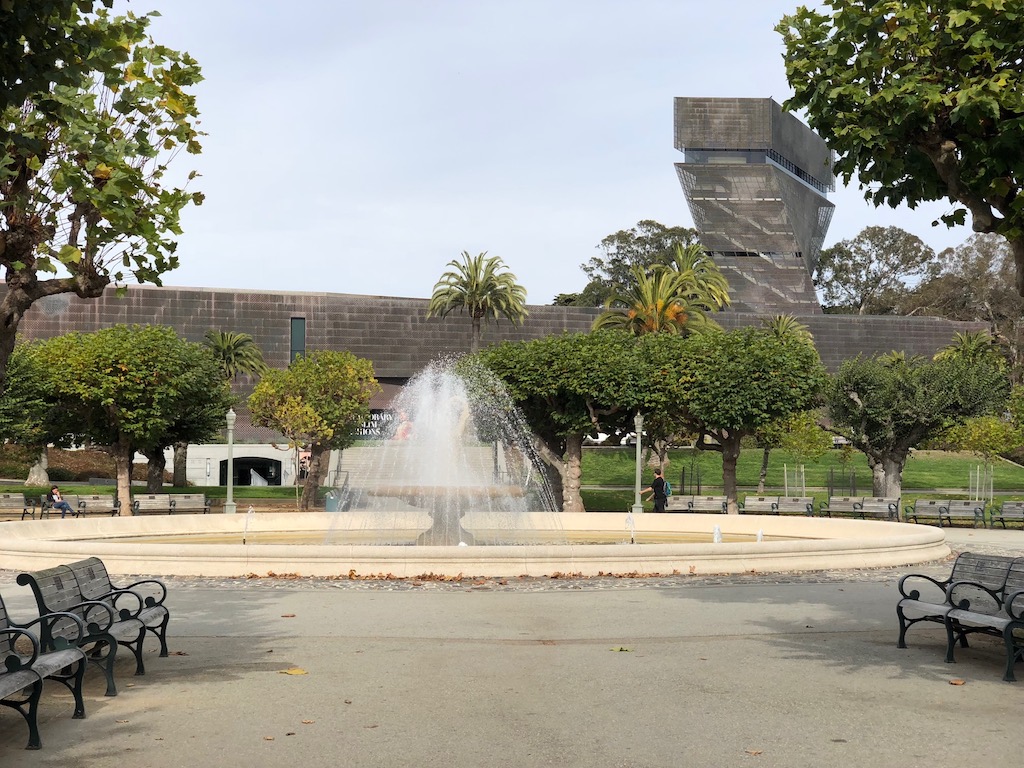
Second Chance
Now I have another chance with the second generation. Recently, we took the grandkids, eight and five, on an art museum trip to the de Young Museum. Good ages to nurture a love for art.
Enhance a trip to an art museum with art projects to make at home.
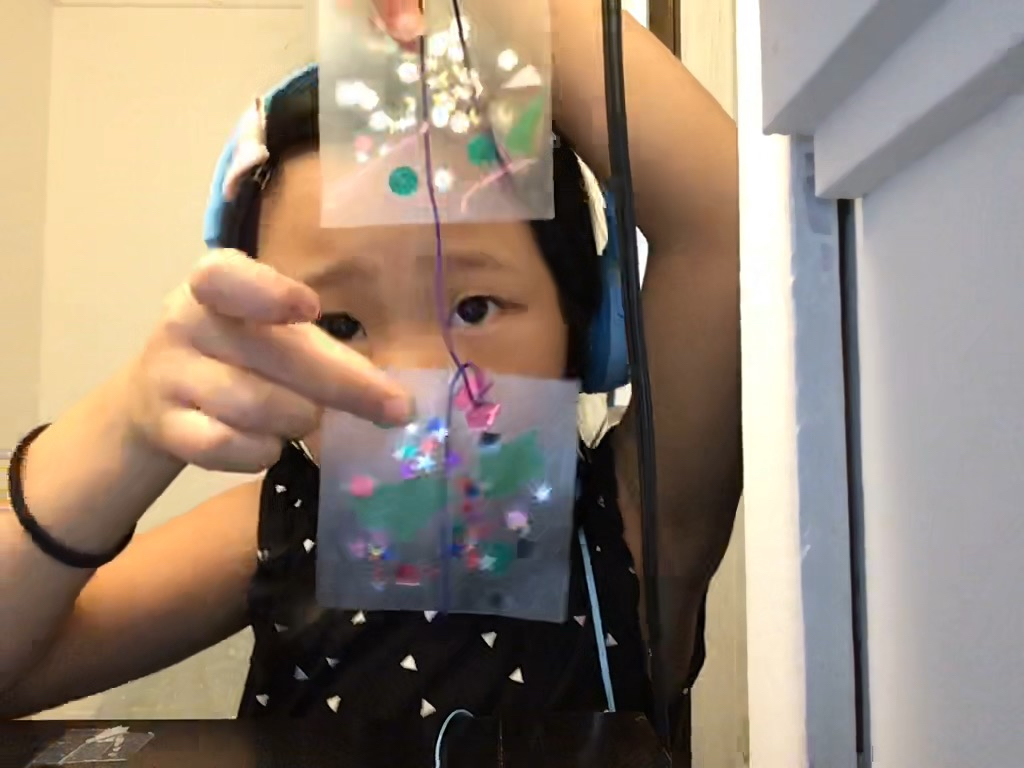
This time, I was better prepared. A few years ago, at the Jepson Center in Savannah, I saw an instructive wall display, perfect for stimulating children’s reaction to a work of art. It offers three prompts: 1) What do you see? 2) What do you think about that? 3) What does it make you wonder?
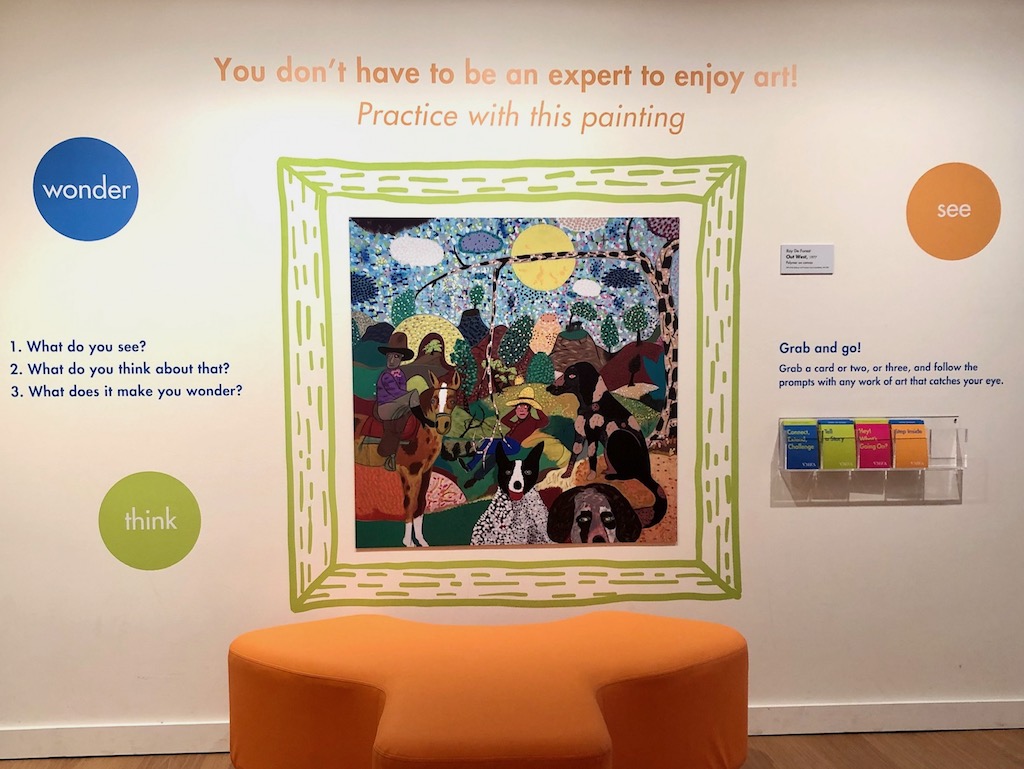
After our first foray to an art museum, I’ve added some of my own thoughts on how to make a kids’ art museum trip fun–or at least, not boring.
Tip #1: Scout Ahead
If you can, scout out the museum in advance, looking for artworks that are likely to interest your children; you’ll see the collections differently when you’re trying to view them through a child’s eyes.
If you can’t do a scouting trip, check out the museum’s website to preview their collections. Some museums also post ideas for kids’ visits.
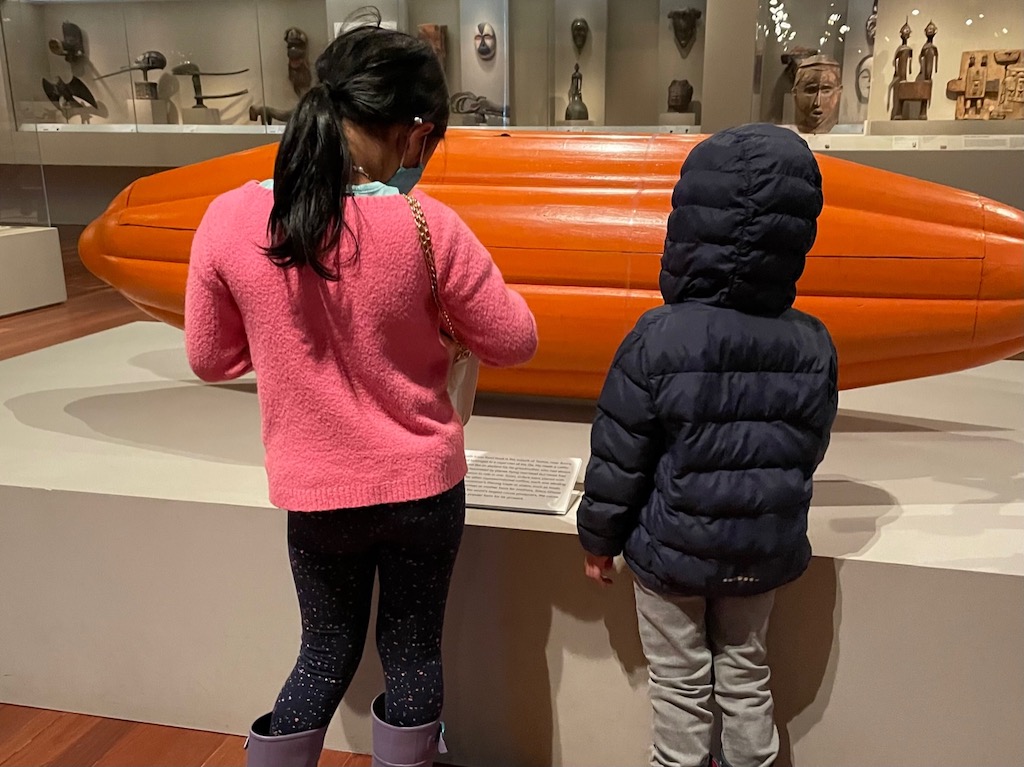
Tip #2: Anticipate Interests
I expected the kids would be fascinated by the African collection, but they breezed through it quickly, stopping longest at a bright orange coffin shaped like a cocoa pod. I think, at this age, bright colors attract kids, and most of the African art in the museum’s collection is more subtle, with dark wood predominating.
Kids tend to like things that are quirky, so we looked for art that might give them pause.
For example, in our museum, there was a trompe-l’œil gallery, where the art is illusionary and the paintings look like 3D images, popping out of the frame. That held some fascination for the kids.
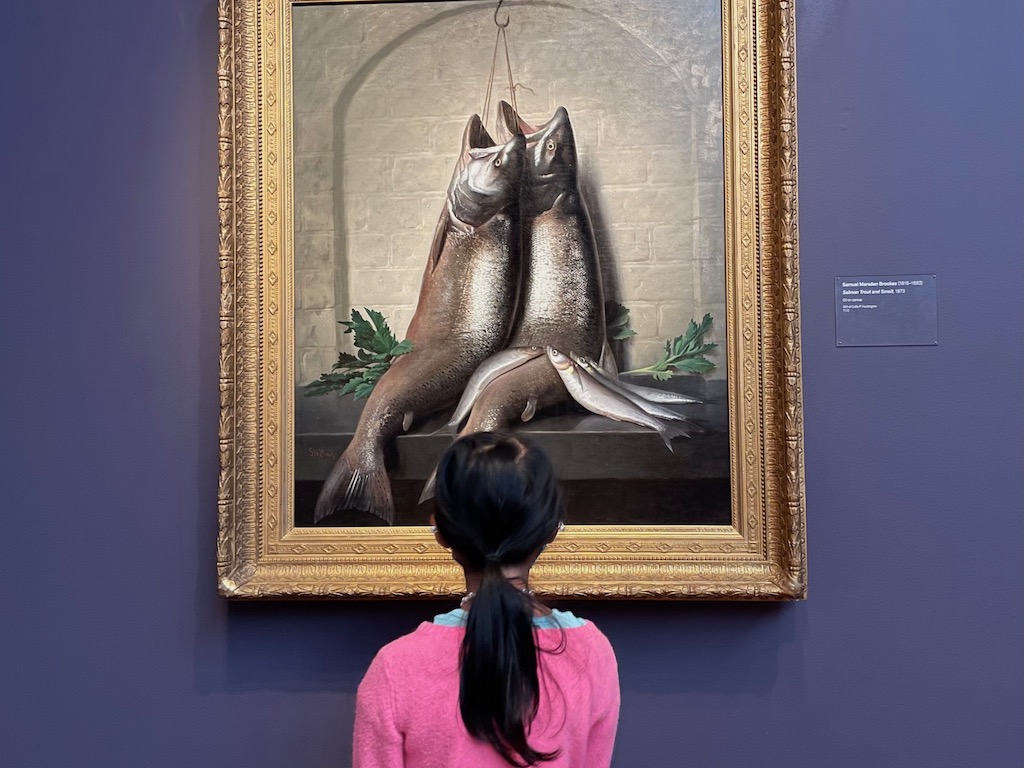
Also, modern sculpture can be eye-catching, because the pieces are not so static. We spent some time in the Saxe Collection gallery, looking at artworks made from materials traditionally associate with crafts. The more unusual and colorful, the better!
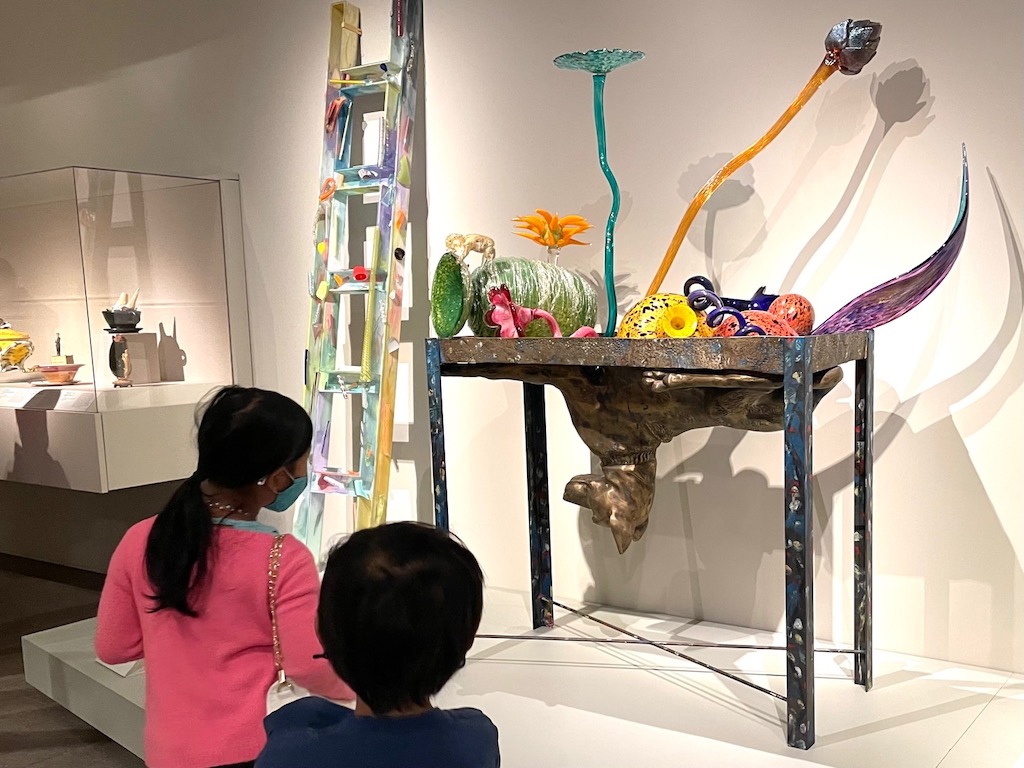
One excellent idea that I gleaned from a travel book is to stop at the museum store first and allow the kids to buy a handful of art postcards they like. Then have them look for the art in the galleries, like a treasure hunt.
I’ve done this with my children, traveling in Europe, but postcards have gotten more expensive. Also, anticipating the siren call of other goodies for purchase in the shop, I decided to skip this step. If you have deeper pockets, you might try this.
Tip #3: Go at their Pace
Meander with the kids and stop where they show some interest. Unless there’s a masterpiece they simply must see, move along at their pace.
When they express interest in a work of art, stop and try to see it as they are seeing it. Ask them questions about what they like about the particular artwork. Is it the colors? The subject matter?
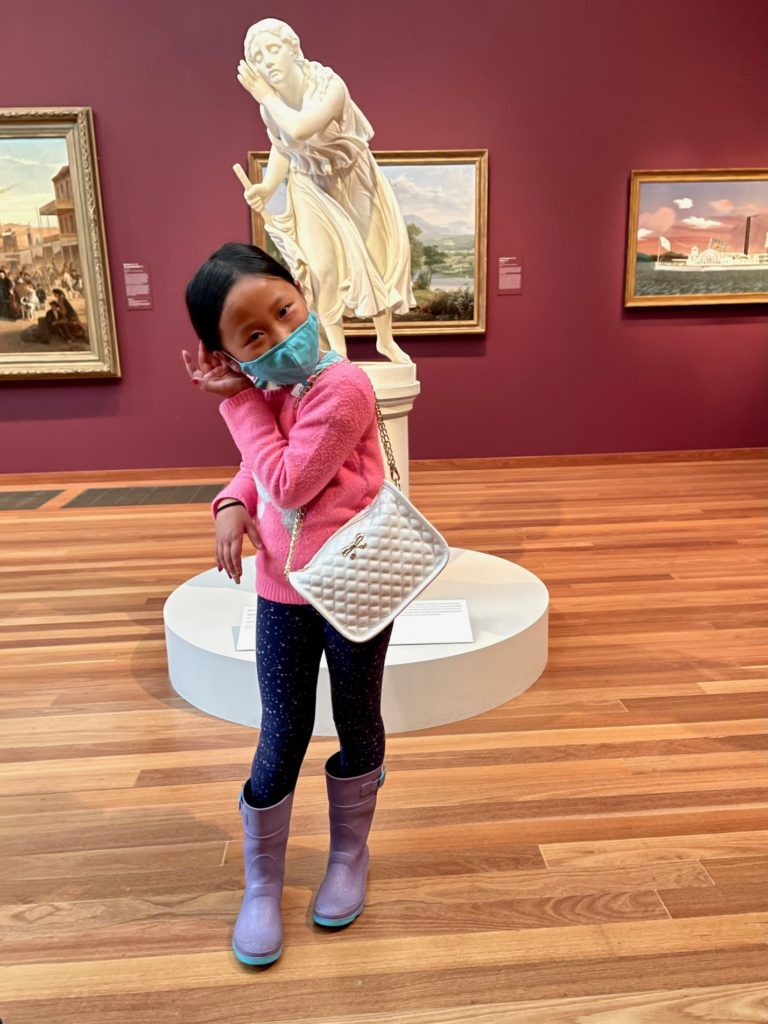
When Miss T encountered the statue of a woman sitting, she noticed details that I might have missed: that the seat of the chair was lined with a small, animal skin rug, that her gown had interesting detailing around the hem, and that the fingers of one hand were broken off on the underside.
Having spent so much time examining this piece, the next time we come to the museum, this sculpture will seem like an old friend.
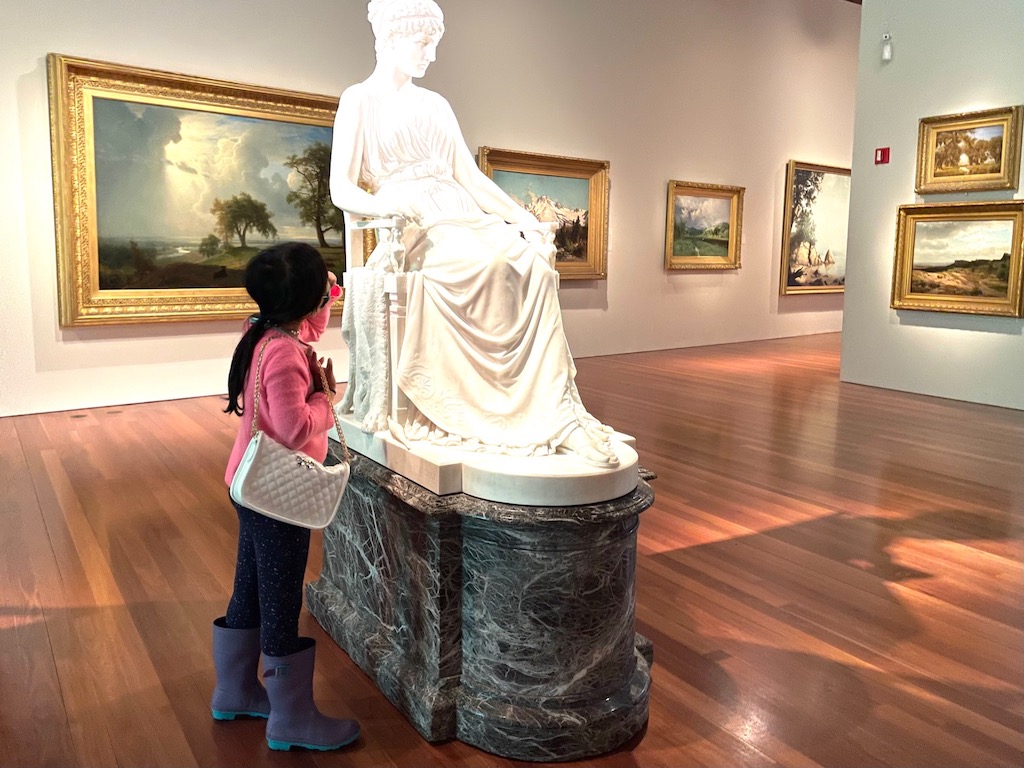
Tip #4 Every Art Museum Trip Needs a Break
If your museum has a sculpture garden, get the kids outside for some fresh air and run-around time. It will revive spirits.
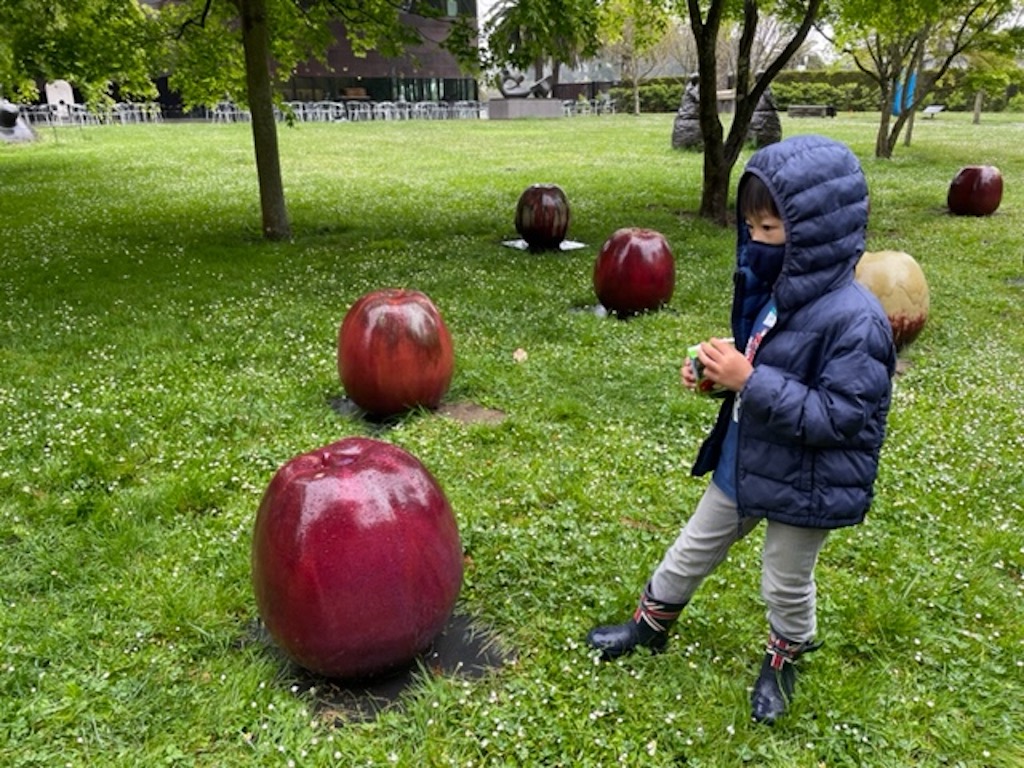
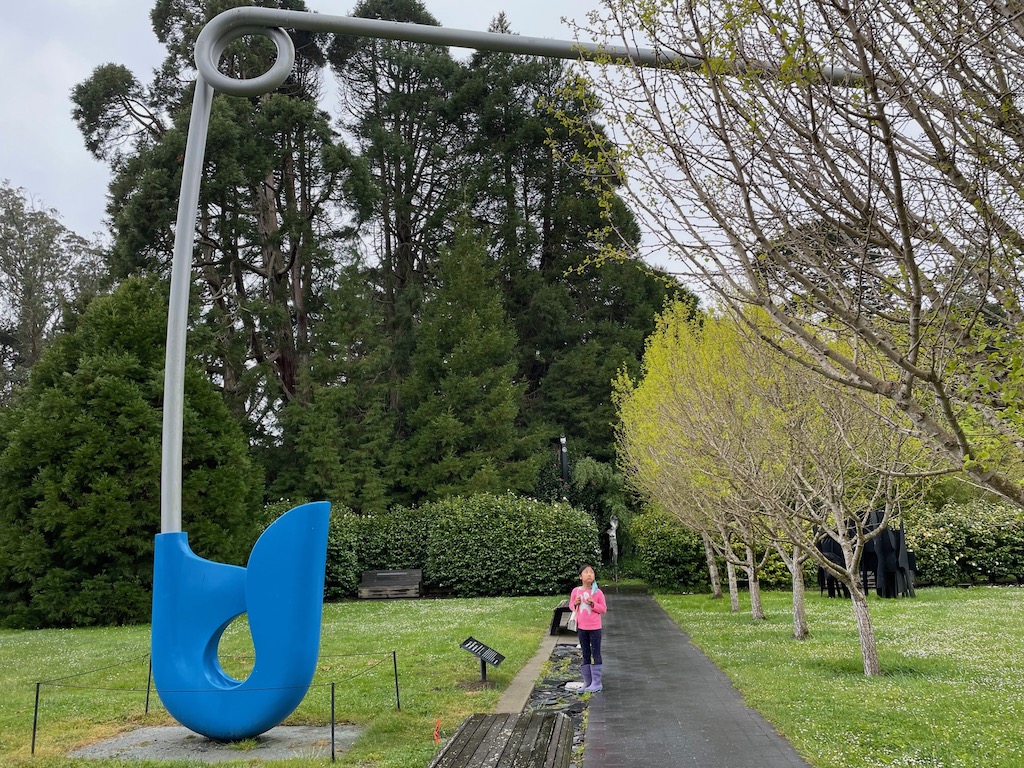
And if there’s a café, stop by for refreshments. But save that for the end. Once they get to sitting, kids may not want to get up and trudge through galleries again.
Tip #5: Art Museum Trips are Not One and Done
We spent two (uncomplaining) hours in the galleries, which was quite a long time, especially for the five-year-old.
Afterwards, I asked, what was the best thing about the art museum trip? The café, Little N said without hesitation.
So it goes. We might have a little more work ahead. One trip to an art museum is only the start. By going to more art museums and returning to this one, keeping the trips short, and “rewarding” them with a snack, I am hoping, eventually, that both children will develop a love of art and art museums.
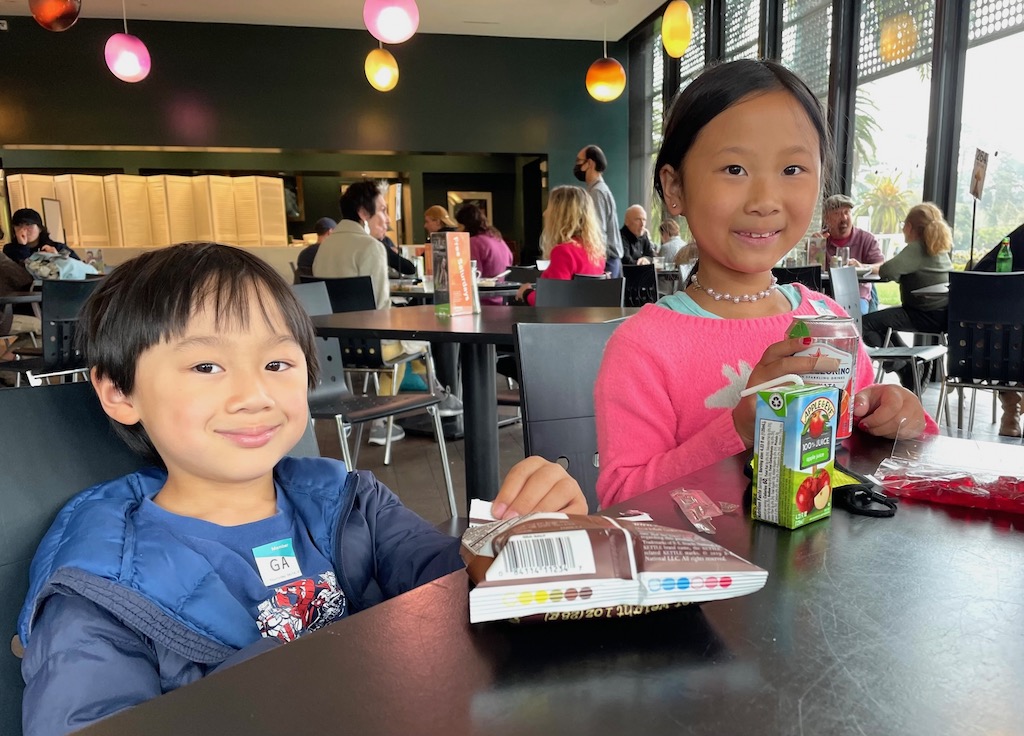
And one day, they may begin to identify artists and styles of art, by exposure to museum field trips with grandpa and grandma. And it will be a genuine appreciation of the art–and not a trained monkey show.
Sign Up!
Don’t forget to sign up for my email newsletter. Every Wednesday, I’ll give you a new idea for an activity or insight to nurture the little ones in your life. Come visit!
Sounds like a fun day. I would have loved to have gone on this! You never know what they get from it. There were moments in my life that something intrigued me but I never spoke about it till decades later. Sometimes, things need to sit.
I’m hoping some of these excursions will stay with the grandkids as they did with you. Thanks for the encouragement!